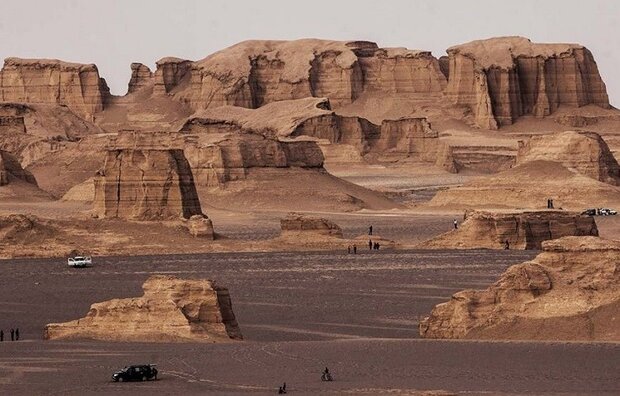Kerman to facilitate travels to UNESCO-registered Lut Desert

TEHRAN – Kerman is set to facilitate travels from its main gateway to the UNESCO-registered Lut Desert, which is encircled by three Iranian provinces.
Tourism authorities of the southern province aim to facilitate travels to the Shahad desert, which is inside Lut, and a gateway to the UNESCO-designated desert.
“We want to provide better conditions for the presence of sightseers in the Shahdad region as it is of special importance in the field of tourism,” provincial tourism chief Fereydoun Fa'ali said on Saturday.
Shahdad has long been a destination for adventurers, nature lovers, off-roaders and trekkers. It is home to giant dunes (locally called kaluts), shifting sands, salt plains, meteorite fields and rocky terrain, which offers visitors a breathtaking vistas and unparalleled serenity of the intact nature and wilderness.
“268 authorized tours the been made to Shahdad region since the beginning of the current [Iranian calendar] year (March 21, 2021),” the official added.
Elsewhere in his remarks, the official expressed the need for increased cooperation by three provinces that encircle the tranquil desert. “A comprehensive plan should be prepared to enhance travels to Lut Desert.”
“By preparing and implementing this plan, we can be more successful than before in developing all-inclusive tourism and security infrastructure.”
“Some 40,000 square kilometers of Lut Desert is situated in Kerman province,” he said.
Also called Dasht-e Lut (“Emptiness Plain”), the salt desert is encircled by the provinces of Kerman and Sistan- Baluchestan, and South Khorasan. Seven years of satellite temperature data analyzed by NASA showed Lut was the hottest spot on Earth with a temperature of 70.7°C in 2005.
The scorching desert is one of the top areas in the world for finding meteorites, thanks to its unique parameters. In recent years, significant finds have been made, with the efforts of national and international teams of researchers.

Lut is situated in an interior basin surrounded by mountains, so it is in a rain shadow and, coupled with high temperatures, the climate is hyper-arid. A steep north-south pressure gradient develops across the region in spring and summer causing strong winds to blow across the area between June and October each year.
“These long periods of strong winds propel sand grains at great velocity creating transportation of sediment and aeolian erosion on a colossal scale. Consequently, the area possesses what is considered the world’s best examples of aeolian yardang landforms, as well as extensive stony deserts and dune fields.”
These areas consist of active dunes some reaching heights of 475 m and are amongst the largest dunes in the world. The Lut Desert displays a wide variety of forms, including linear-, compound crescentic-, star-, and funnel-shaped dunes. It is home to giant Nebkha dune fields (dunes formed around plants) as well.
“The region has been described in the past as a place of ‘no life’ and information on the biological resources in this area is limited. Nevertheless, the property possesses flora and fauna adapted to the harsh conditions including an interesting adapted insect fauna,” the UN body said.
The wintertime is itself a perfect excuse for a vacation but to some people, visiting a desert region sounds like “something else”. Some visitors to Lut say it feels almost like walking across a seabed without water.
Furthermore, those who set up camps are well rewarded when the sun sets to prepare the ground for a very bright moon and extremely vivid stars to show off in the absolutely clear sky of the desert.
AFM
Leave a Comment